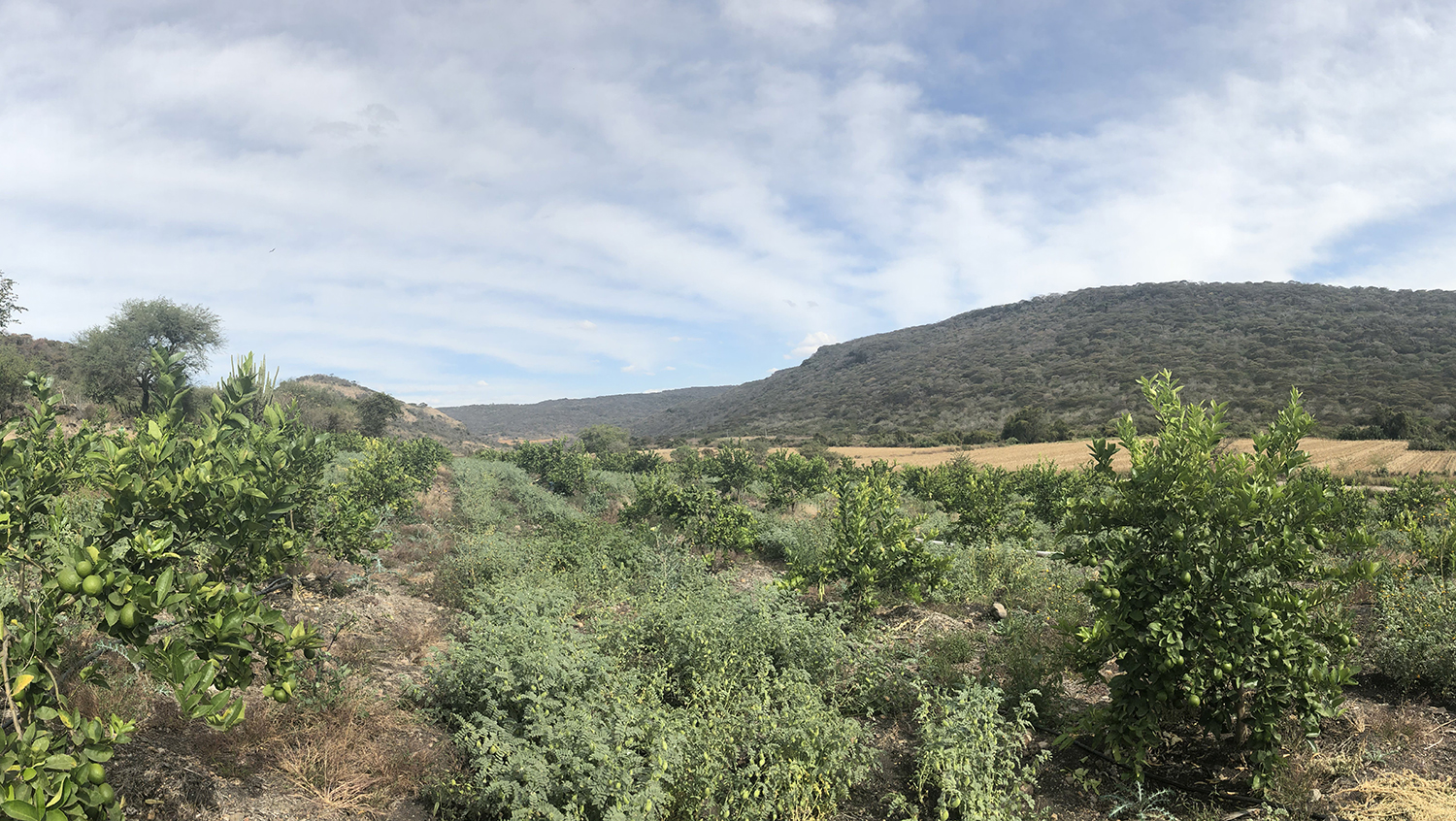
Garbanzo bean plants located outside of San Jeronimo in Jalisco, Mexico. (Heidi Estrada/George Washington University)

Garbanzo bean plants located outside of San Jeronimo in Jalisco, Mexico. (Heidi Estrada/George Washington University)
Growing up my family has always taken an annual trip to my dad’s hometown of San Jeronimo, a small ranch located in the countryside of Jalisco, Mexico. Perhaps my favorite family tradition is going out to my uncles’ fields to pick garbanzo beans. We would head out to the wide-open fields full of rich, green vegetation. Once we got to the field my cousins and I would jump out of the truck and go crazy picking all the plants that had the most promising beans.
When we got home everyone would sit together in a circle, tear the beans off the plants and throw them into the large buckets in the center. As the buckets began to get full my aunts would heat up the grill and start cooking them. When my aunts announced that they were cooked and ready to eat, we would run to receive our well-earned bowl of beans. We’d load them up with salt and snack on them till we were sick!
Some years we didn’t pick the beans ourselves and had to search for farmers in the nearest pueblo who were selling them. I never questioned why some years we would pick them ourselves and other years we had to purchase them until I overheard a conversation between my aunts and uncles. I learned that some years my uncles had a successful harvest because the plants received plenty of rain, but other years there wasn’t enough rain for the plants. When my uncles were unable to produce a successful harvest, we had to search for another farmer who did have a successful harvest. I never questioned the severity of the issue because as long as I was able to get my hands on my garbanzo beans, I was a happy camper.
However, the issue my uncles occasionally face is a sign of what they could face on a regular basis if climate change isn’t brought to a halt. Additionally, my uncles’ situation isn’t unique to the region of Jalisco, but more of an example of what’s happening all over the world. As global temperatures have continued to increase, droughts have become more frequent and it’s left farmers in a tough situation. Not only are they unable to financially support their families because they aren’t able to sell their crops, but they’re also unable to fulfill the orders placed by their sellers, impacting the supply chain.
As climate change has become a growing concern, many scientists have dedicated their research to discovering innovative solutions that will help secure our plant production. Recent research from the Technical University of Munich (TUM) has revealed that material from gene banks could be used to improve the climate resilience of maize plants.
Chris-Carolin Schön, Professor of Plant Breeding at the TUM, led the research team and has come up with a solution to utilize the genetic potential of old varieties. Their research suggests that as a result of over-breeding, characteristics that could help plants be more resilient and adaptable may have been lost. With further research and development, harnessing the genetic potential from old varieties could play a vital role in securing plant production for generations to come.
The distribution to plant production is currently felt only lightly by the larger population, especially those that live in developed countries. When a supplier is unable to produce their crops for the season, there are usually other suppliers that can be found in substitution. However, as more farmers across the globe continue to be impacted by droughts as a result of climate change, there will be a decrease in global production.
And there may come a day when I won’t be able to find garbanzo beans anywhere near my dad’s hometown.